Day 1: Saltoluokta – Pietsaure
When I arrive in Gällivare station I have to wait till the afternoon as in September the morning bus to Kebnats (a boat ride from Saltoluokta) is not operating anymore. As I’ve been several times in the area I recognize the bus driver :-).
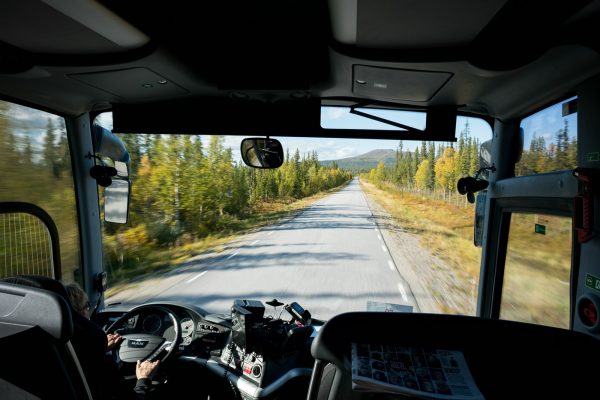
The weather is perfect, the temperature is almost 20°C. This is unusual as it is late in the year for this far north. When the bus stops at Kebnats, it is not long before the boat to Saltoluokta arrives.
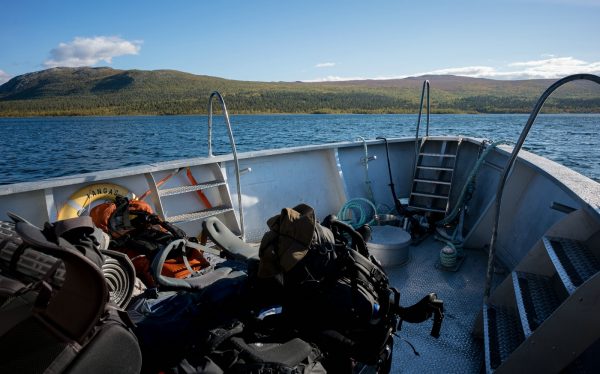
At the other side, I briefly stop at the Saltoluokta mountain station to refill my water bottles and rearrange my pack. Then my hike starts – first along the King’s Trail (Kungsleden). Soon a path towards Pietsaure branches off the main trail. Due to the beautiful weather I can walk in short-sleeved clothes. The bright fall colors of the birch forest are amazing.
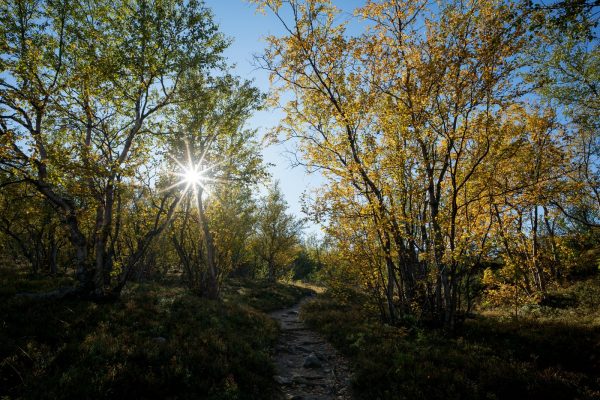
The trail ascends steadily towards a saddle beneath the mountain Lulep Gierkav. Later-on, when I reach the treeline, there are magnificent views onto the lake Langas and the surrounding landscape. But I also really like the forest.
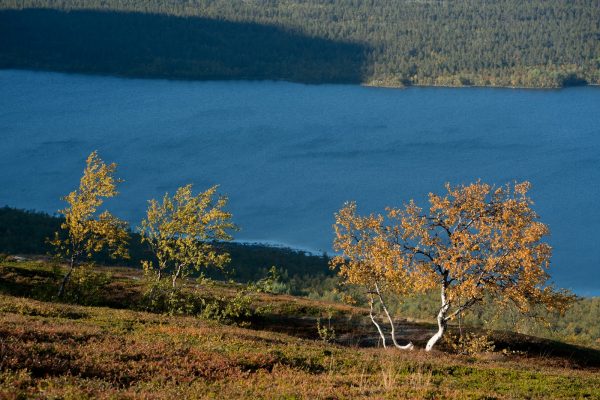
I encounter a few day hikers. Before I reach the saddle, I stop for a break and enjoy the view.
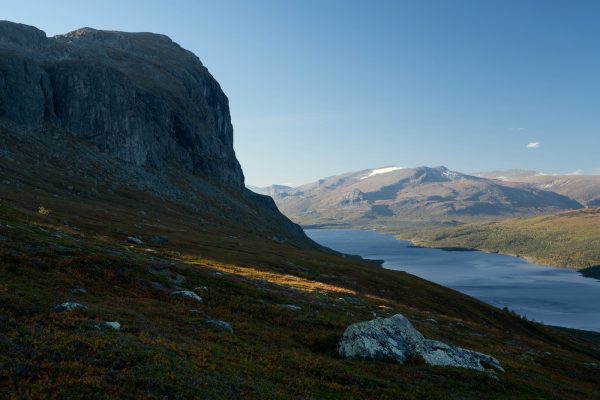
From the saddle the trail descends towards a Sami settlement at the lake Pietsaure. Again, I really like the colors of the trees in the late afternoon light.
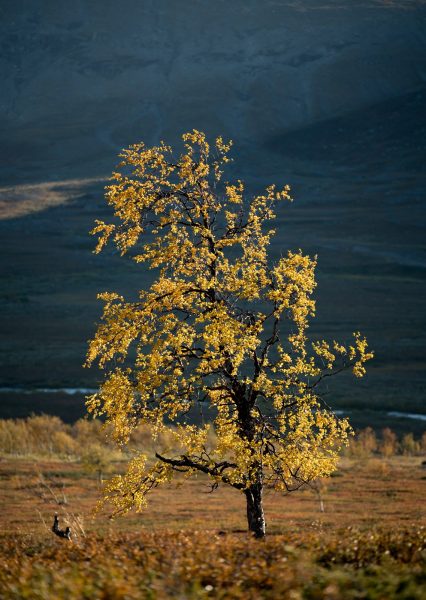
When I arrive at the Sami settlement I do not encounter anybody and continue onwards towards the gravel beach.
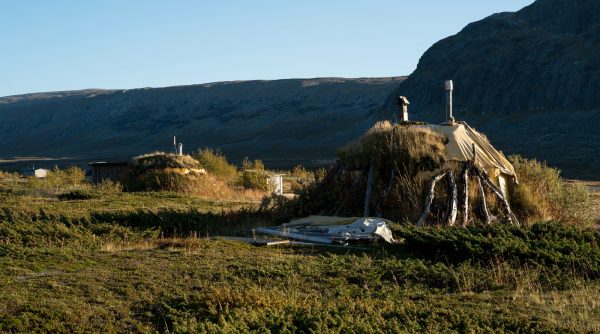
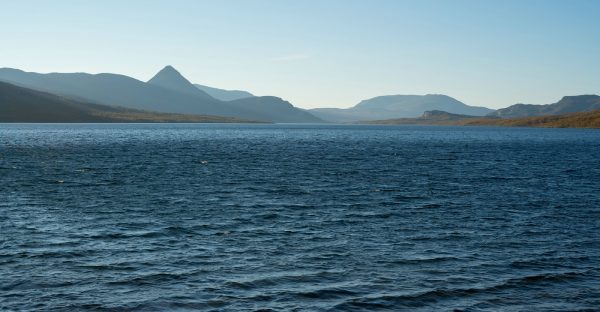
I continue my hike along the beach until I reach the lake’s tributary, the stream Ávtsusjåhkå. The water does seem calm but there is some current and it is not shallow. Thus, I remove boots and pants, put on my wading shoes and first test the crossing without heavy backpack. My evaluation is positive and thus I go back and carry all my gear to the other bank. If the water level was higher, this crossing could turn out difficult.
I follow the beach to the southern “corner” of the lake.
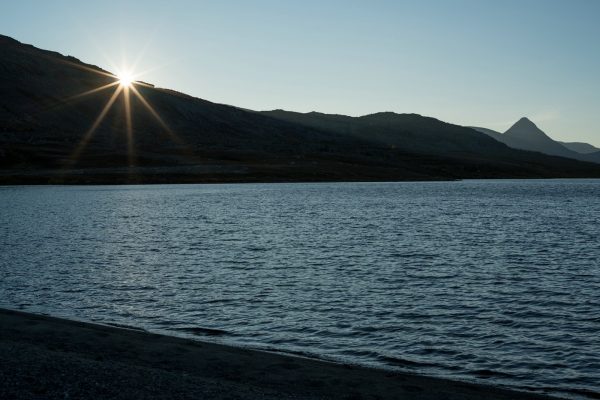
I continue north-west along the lakeshore until I spot a suitable campsite. Pitching my tent and sorting through my gear takes quite a while. This is normal at the beginning of a trip. In fact, my tent has its first real outing.
When I’m done, I refill my water bottles, take an evening picture, lay down inside the tent and start cooking my evening meal.
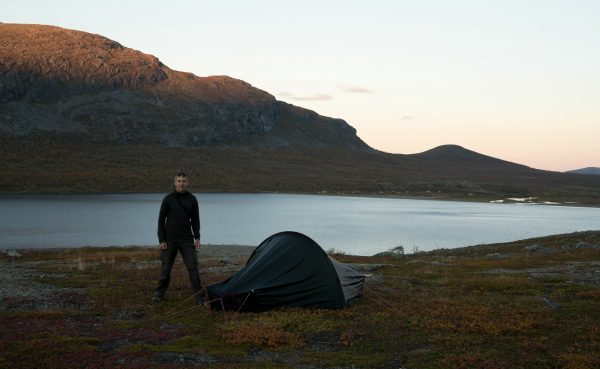
Day 2: Pietsaure – Saddle near Sluggá
It was really good to get a night’s sleep after the journey up north and the first half day of hiking. I slept soundly and if I woke up, I didn’t bother looking outside. The sky was clear, and there was a chance for northern lights, but I was simply too tired. In addition, during my last winter trip I had been spoiled by a very strong aurora.
In the morning the sun wakes me up. I prepare my breakfast and then get my gear packed up. As with my tent the evening before, I’m not yet very efficient in it. Later-on I’ll be a lot quicker.
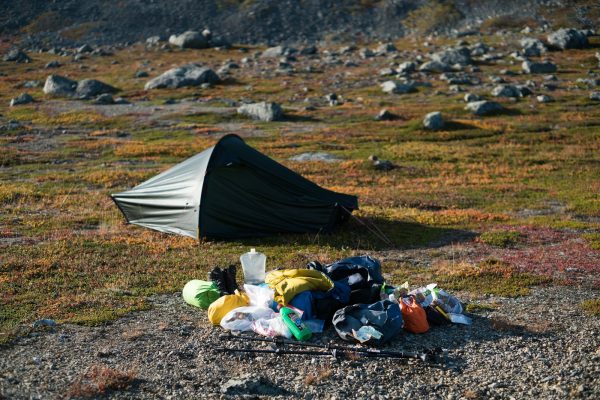
When I’m done I start my hike with the best sunshine. After a section across grass and heather, I’m getting closer to wooded terrain. I need to cross the birch forest since I don’t want to descend to the lakeshore; I’m not sure if there’d be a decent path although it is indicated on the map.
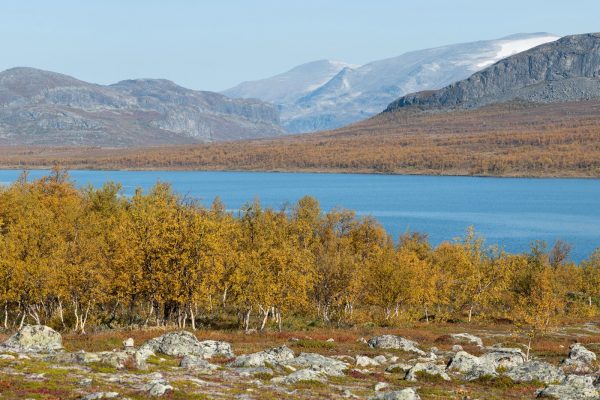
From time to time I reach places that offer magnificent views across the lake. I really enjoy the contrast between the blue of sky and lake, and the colorful autumnal trees.
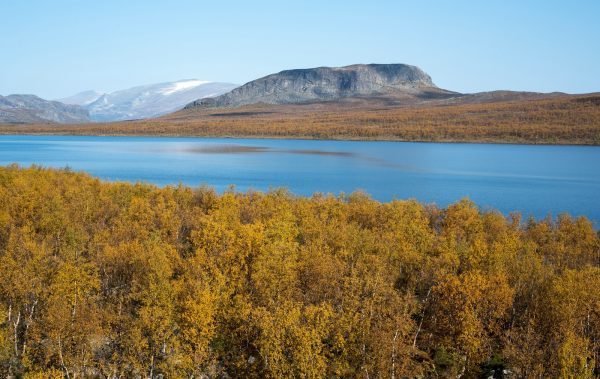
Finding a route through the forest is strenuous. I aim to reach higher ground to get above the treeline. It’d be much easier to walk in open terrain. After some brush and loose rock I finally succeed. I stop regularly to admire the view and take some photographs.
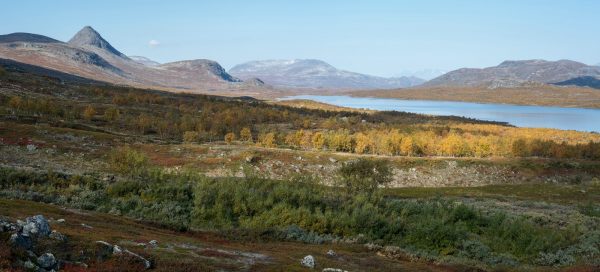
I cross a stream with a small waterfall and then have a short break. I try to walk towards the gap between the mountains Gähppo and Vuovres.
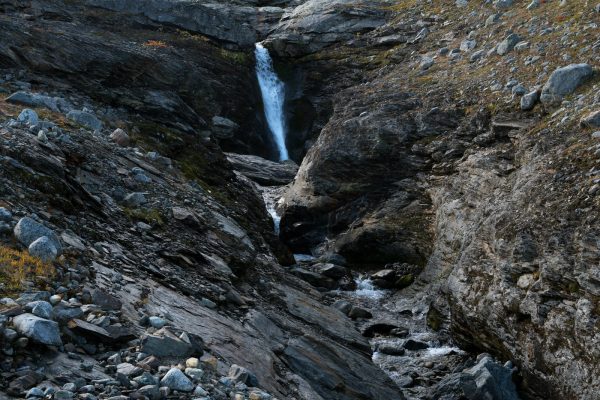
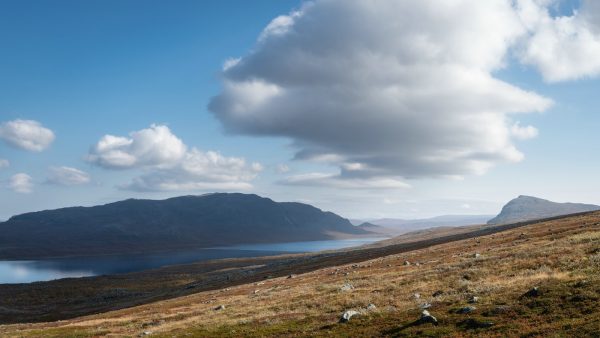
The ground is getting more and more stony as I ascend further. It’s not that far anymore to the saddle where I plan to camp. Pietsaure is slowly withdrawing from my view.
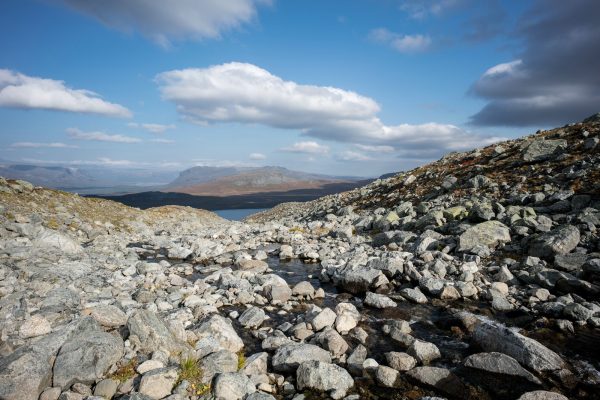
When I reach the saddle, it’s still early in the afternoon. Nevertheless, I stop here and make camp. The Saddle between Gähppo and Vuovres is an ideal location for a potential ascent to Sluggá but also offers great views by itself. There’s a lot of wind and I decide to relax a bit as climbing the summit isn’t a lot of fun in these conditions.
In the evening I explore the vicinity of my campsite a bit. Especially fascinating is the view towards the Sarek mountain range that lent its name to the whole national park. While clouds obscure the higher peaks, the light really gets interesting when the sun is low in the sky.
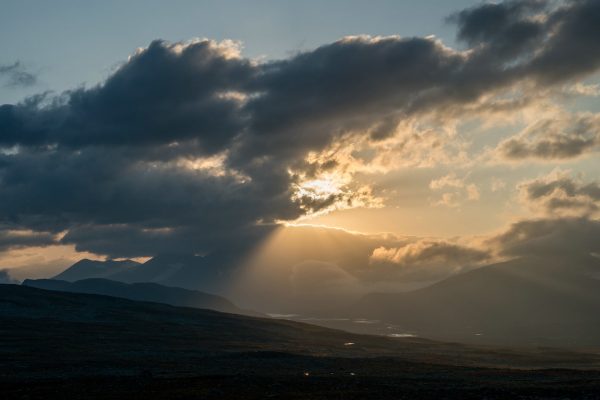
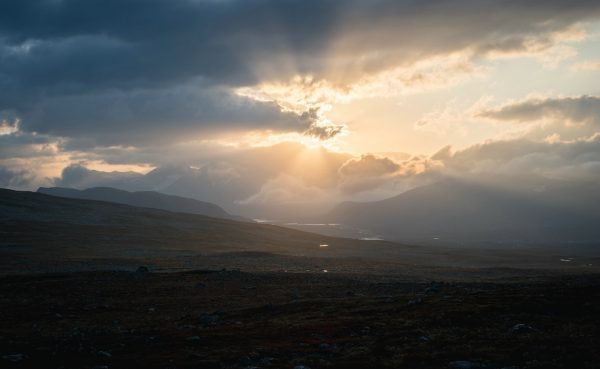
Soon, clouds totally obscure the sun. That’s it for today. No summit climbed and not a lot of distance covered. But the day has really been wonderful!
Day 3: Saddle near Sluggá – Guhkesvágge
It remains relatively windy even at night, but thanks to earplugs I sleep quite well. When I finally look out of the tent in the morning, the clouds have cleared over the Sarek mountain range. The morning sun sheds warm light on the peaks.
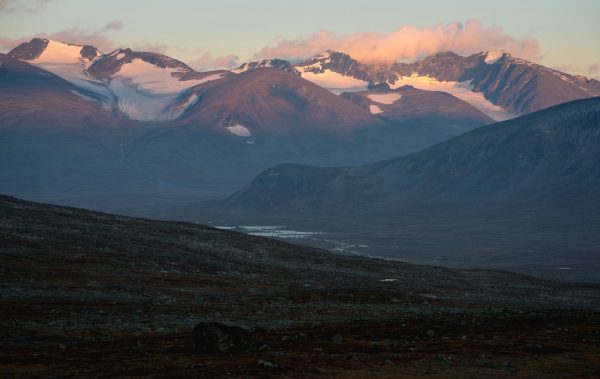
After having taken a few pictures, I prepare my breakfast. Unfortunately, it is still quite windy, and a cloud layer has formed to the northwest. I take this as an excuse to skip the summit of Sluggá. I tell myself that for really good light I should have climbed earlier anyway… I finally pack up my things and make my way towards the valley.
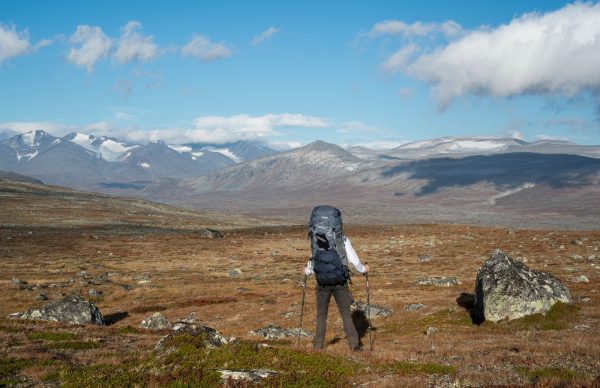
On the way into the valley I meet a reindeer herd that has positioned itself for a photo in front of the peaks in the distance. I stop, pull out my camera, mount the telephoto lens and pull the trigger. For such spontaneous photos – even if they are mainly documentary – it’s really good to have the camera at hand. I carry it with the three lenses in a camera bag in front of my chest. This also provides a counterweight to the backpack; the camera bag is attached to the shoulder straps.
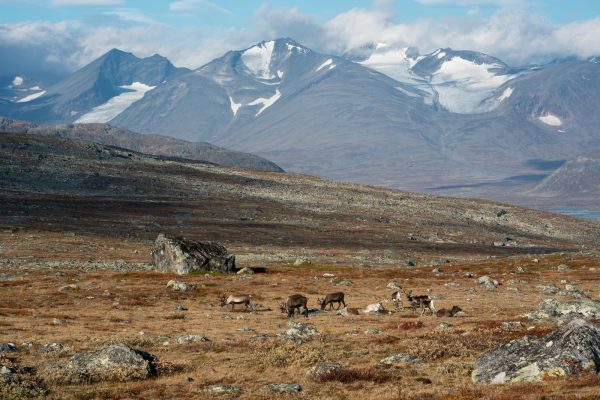
In the beginning the terrain makes for easy hiking, but with time it gets more and more impassable, and my progress gets a lot slower. I pass some small lakes where I take a photo break. In the meantime clouds have rolled in, but the cloud gaps provide an interesting play of light on the landscape.
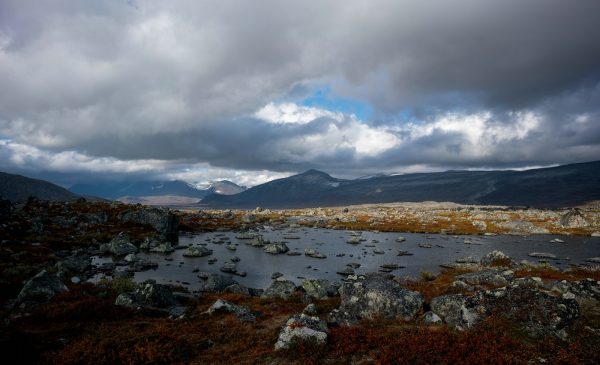
The cloud cover thickens, and it rains every now and then. I’m really annoyed to have to change my clothes and make my backpack rainproof. Fortunately, there is no heavy rain. My rain outfit probably frightened the weather gods ;-).
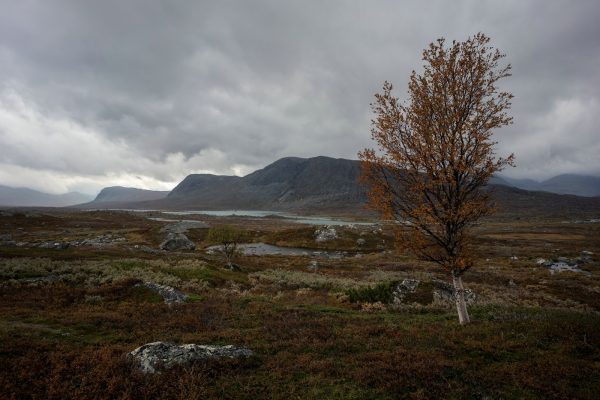
I spend my lunch break behind a large boulder with a slight overhang. Here it’s relatively windless and dry.
After passing a reindeer herder’s hut, I have to cross dense brush and swamp again. Soon, however, I find a clearly recognizable path and cross the stream Lulep Niendojågåsj in water sandals.
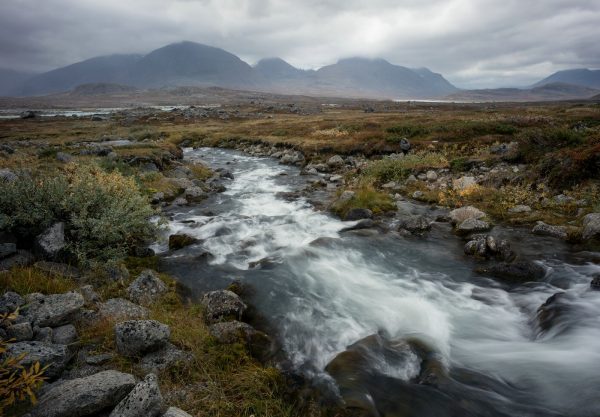
As my hike goes on, the glaciers of the Ähpar massif become better visible.
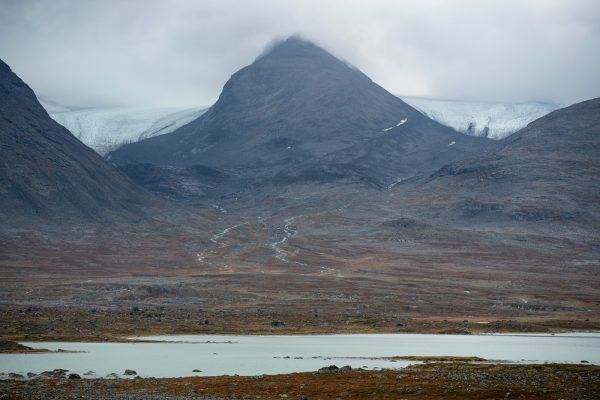
Unfortunately, the Sarek massif hides in the clouds again. The last stretch to Guhkesvágge is pleasant to walk. Here I meet some hikers walking in the opposite direction.
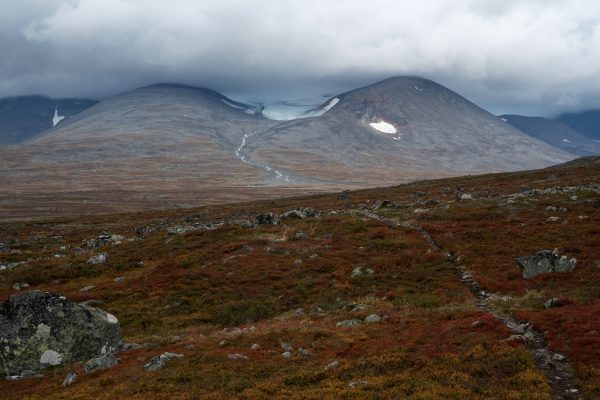
Finally I reach the bridge crossing the stream Guhkesvákkjåhkå, which marks the border between the national parks Stora Sjöfallet and Sarek. Crossing the stream without this bridge would be impossible. It is one of three bridges for hikers in Sarek national park. I like the place by the river, and take some pictures of the rapids and the bridge.
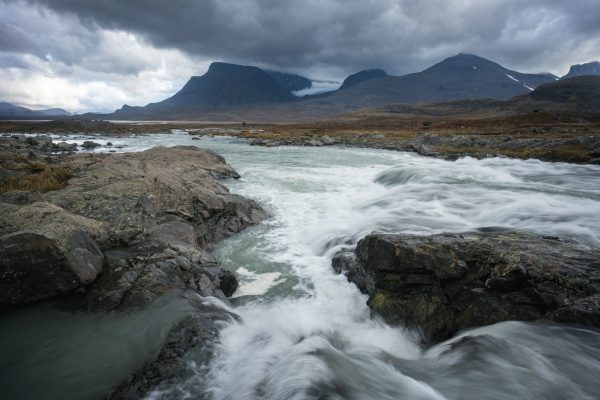
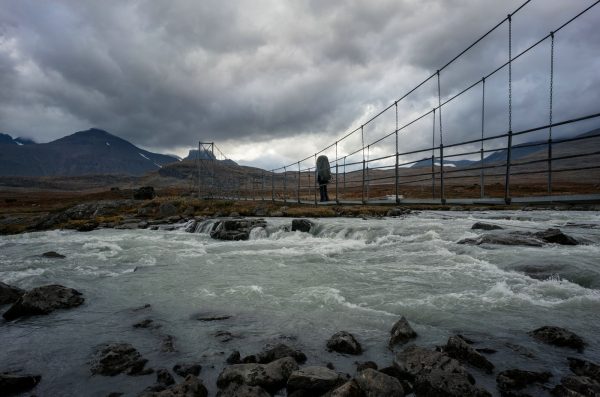
The latter photograph was a bit more elaborate: setting up the tripod, setting my camera to interval shooting (the self-timer wouldn’t have been enough), lifting the backpack on my shoulders, getting up on the bridge and back, and finally packing everything up again ;-).
When I’m finished with playing around, I walk on towards the elevation Vuojnesvárásj (1006 m). It’s about 200 meters of ascent. Just before I reach the top I set up my tent.
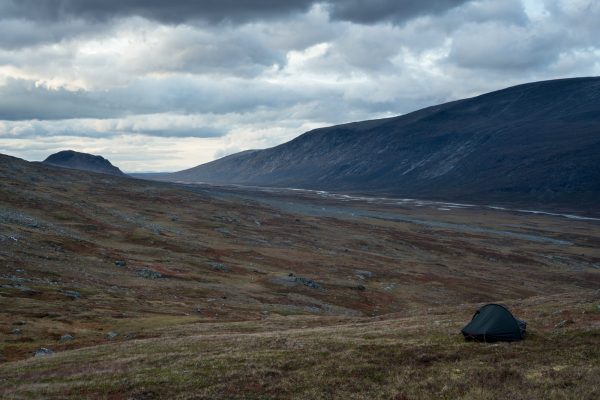
In the distance Sluggá is illuminated by the rays of the sun, which I capture for a photograph. From my location I can see the whole valley I have passed through with the lake Liehtjitjávvre.
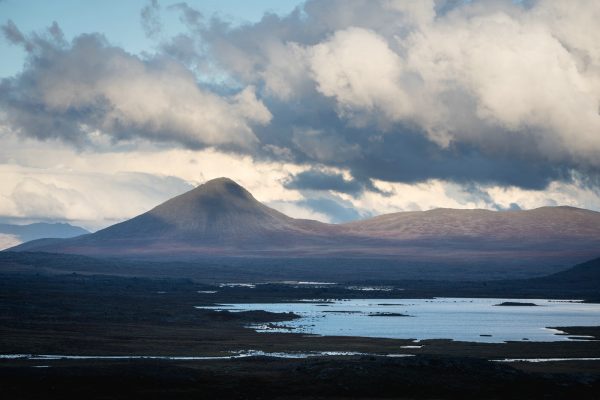
Of course, I walk up to the pass in the evening. The view from there is quite spectacular. However, the photos I take in the evening are not worth showing, because the landscape is shrouded in gray. If I’d have known that there would be much better light the next day, I wouldn’t have taken any pictures at all.
In the evening I meet a Swedish couple. We greet each other and they set up their tent a few hundred meters further down the slope. I prepare my dinner and soon enjoy the comfort sleeping bag.